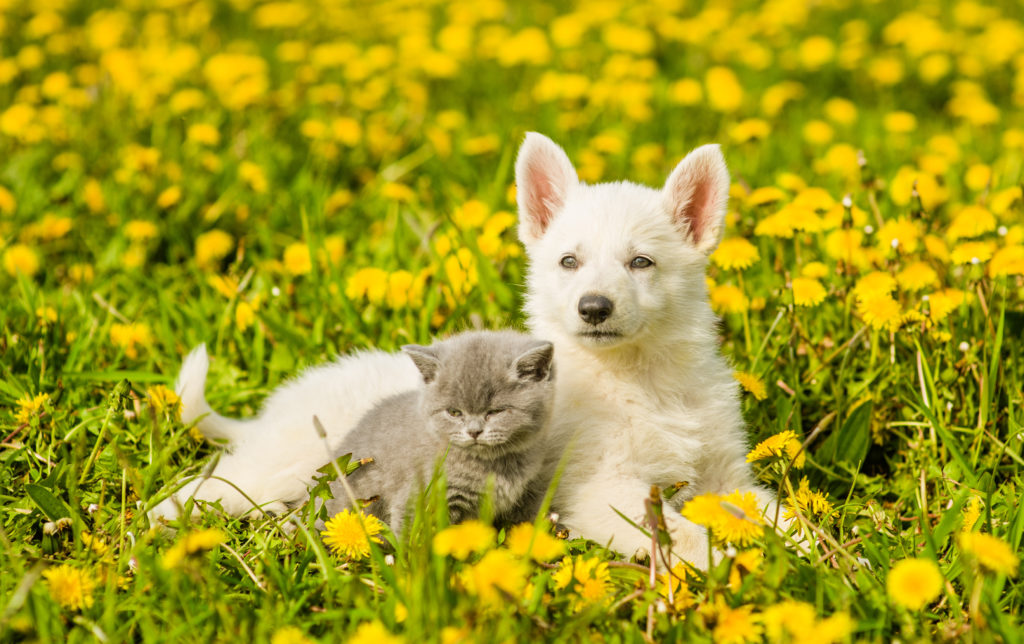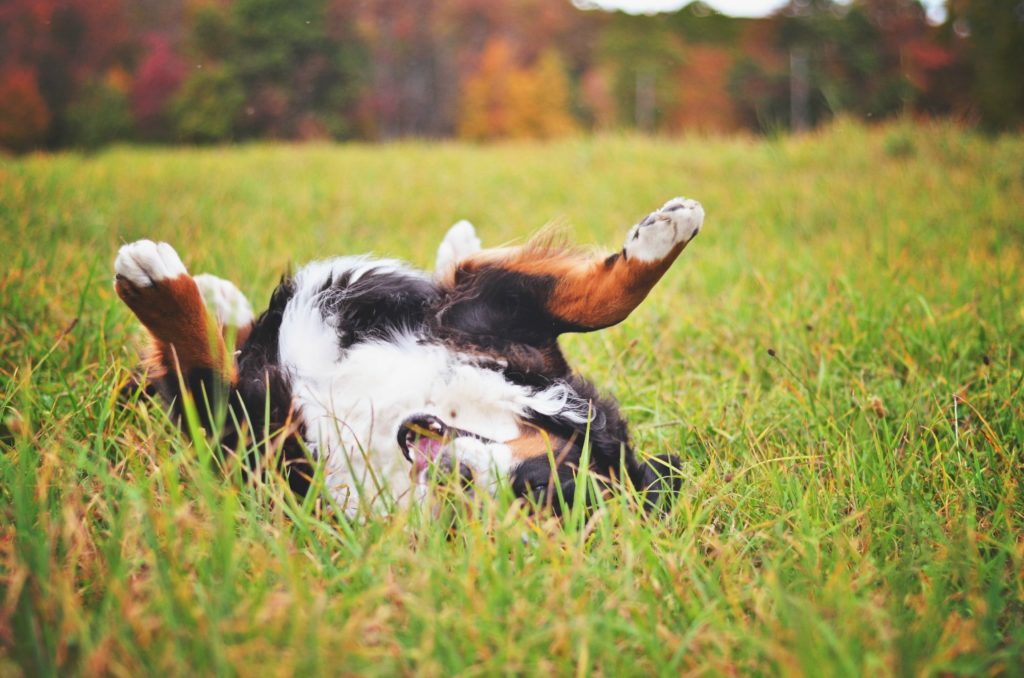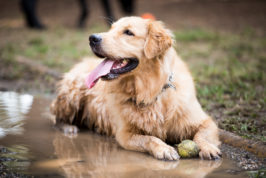You might be surprised to learn that hay fever isn’t just a human problem, pets can get it too! It’s surprisingly common in both dogs and cats so let’s take a closer look at what hay fever is and how you can help alleviate your pet’s discomfort.
What is hay fever?
Hay fever is pollen allergy and is therefore most commonly seen in spring and summer. Pets can suffer from hay fever just as humans can, but they tend to show symptoms in their skin, rather than the itchy eyes and runny nose that humans suffer from (although some pets will get these symptoms too!).
Dogs and cats can react to grass, weed or tree pollen, and some unfortunate pets might be allergic to more than one – even all three! As a general rule, tree pollen levels are at their highest in late March to mid-May, grass pollen in mid-May to July and weed pollen from the end of June to September. This can vary slightly from year to year and they sometimes overlap but these timings might help you work out which type of pollens your dog is allergic to.

Why do pets get hay fever?
Hay fever is an allergic reaction and just like human hay fever, some pets will be more susceptible than others. In particular, some breeds of dog are more prone to developing hay fever including:
- Dalmatians
- Irish Setters
- Poodles
- Schnauzers
- Golden Retrievers
- Shar Peis
Cats and dogs can get hay fever at any age, although it usually begins at a young age in the first or second year of life.
How do I know if my dog or cat has hay fever?
Hay fever is common in both dogs and cats so it is important to be aware of the symptoms to look out for. Some of the more common cat and dog hay fever symptoms include:
- Skin irritation (you may see your dog itching, licking, or biting at their skin)
- Skin rashes
- Bald patches or areas of infected skin known as ‘hot spots’. These are caused by your cat or dog scratching or chewing excessively in an attempt to alleviate the itchiness
- Frequent sneezing
- Irritated red or watery eyes
- Runny nose
- Coughing
These symptoms can vary in severity from pet to pet and not every animal will show all of these signs. Bear in mind that these signs are not always specific to hay fever and it could be that there is something else wrong with your pet. Speak to your vet who will be able to rule out other conditions and help you determine whether hay fever is the cause of your pet’s symptoms.
Pets that have hay fever tend to be prone to other allergies as well, such as to house dust mites, fleas and food. If your pet is showing any of the symptoms above at other times of the year, it might be that they have other allergies as well as hay fever. Your vet might suggest a blood test that can help to narrow down what your pet is allergic to. If you can, it is a good idea to keep a diary of their symptoms to help identify the most likely cause.

How is hay fever in pets treated?
Unfortunately, hay fever cannot be cured but there are several treatments available to help manage the symptoms. Successful management often requires more than one method of treatment. Depending on your pet’s symptoms and clinical history your vet may suggest one or more of the following:
- Topical treatments (treatments that go on the skin) – including medicated shampoos, wipes, emollients, creams, and sprays
- Medicated ear drops
- Medicated eye drops
- Antihistamines – only ever give these if recommended by a vet as not all antihistamines are safe for pets and certain types can be toxic for dogs and cats.
- Supplements for your dog’s diet – these often contain essential fatty acids (EFA’s) which play an important role in helping to maintain a healthy skin barrier. Pet Active Life recommends YuDERM Itching Dog from the UK’s number one veterinary supplement brand. They even have a whole host of health guides to check out – we suggest reading their guide to why your dog might be itching.
- Medication to reduce the immune reaction to pollen – there are several different types including tablets, liquid and even long-acting injections. Your vet will be able to advise you on the best option for your pet.
- Immunotherapy injections (sometimes called allergy vaccines)
Not all of these options will be suitable or even necessary for your pet, but your vet will be able to discuss them with you and tailor a management plan for your dog or cat.
What to do if my dog or cat has hay fever?

There are lots of things you can do at home to help reduce your dog’s hay fever symptoms. The main one is to minimise your pet’s exposure to pollen. This could include wiping your pet’s coat and feet with a damp cloth to remove any pollen from them after they’ve come in from outdoors. Pollen counts are usually at their highest at midday so try to walk your dog early in the morning or late in the evening if you can. If you have a cat that suffers from hay fever, you could consider keeping them indoors during the middle of the day. Other things you could consider include:
- Grooming your dog or cat regularly to remove any pollen from their coat.
- Keeping windows and doors shut wherever possible during hay fever season.
- Frequent vacuuming of the house
- Washing your pet’s bedding regularly.
- Consider the use of an air purifier in the house to reduce the allergen levels in the environment.
- Ensuring your lawn is cut short and reduce the amount of time your pet spends in the garden.
- Keeping on top of your pet’s parasite treatment to ensure they are not itchy for other reasons! Discover why your dog might be itching and the causes of itching in cats.
Never give your pet any medication without first checking with your vet – many human medications can be extremely toxic for dogs and cats and some can even be fatal. Some topical skin treatments can be helpful but avoid putting anything on your pet’s skin unless under the direction of a vet, as many home remedies can actually make your pet itchier. Sometimes they even encourage your pet to lick themselves more and in turn make their skin even more sore!
Final Thoughts on Hay Fever in Pets
Although hay fever isn’t curable, there are many things that can be done to help alleviate your pet’s discomfort. Having said this, cat and dog hay fever can be difficult to manage and sometimes a referral to a specialist veterinary dermatologist is needed. The best thing to do is talk to your vet who will be able to discuss everything with you in more detail.
Looking for more pet lifestyle tips? Check out our helpful articles on how to clean your pet’s teeth, foods that cats can’t eat or dog behaviours debunked.




